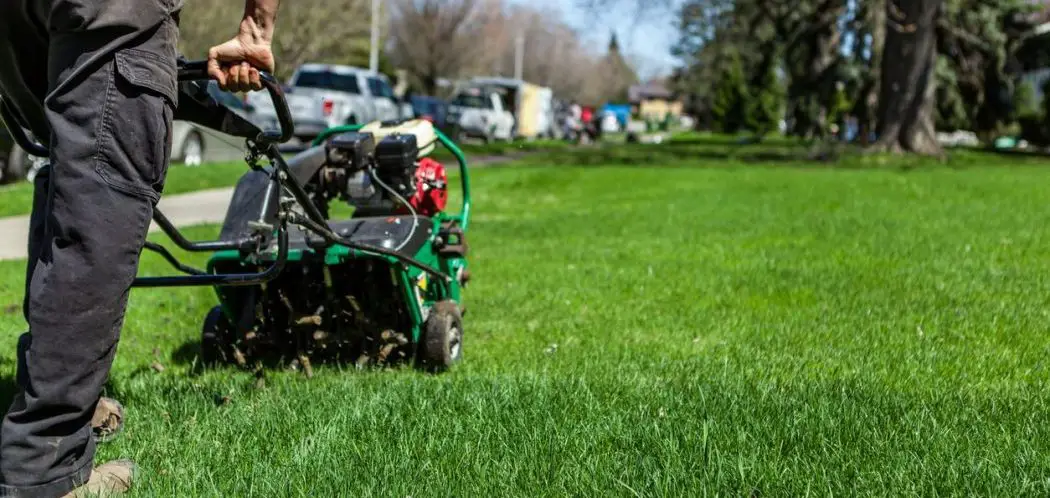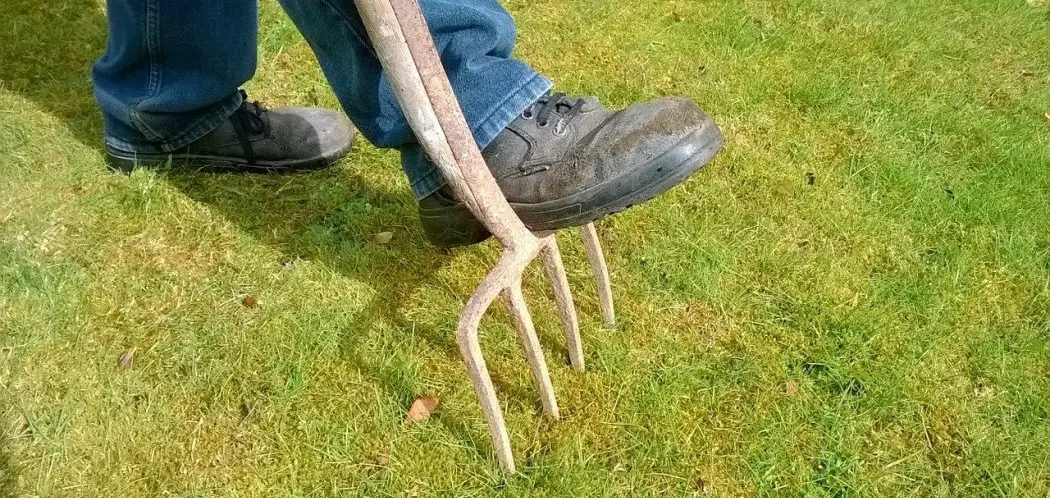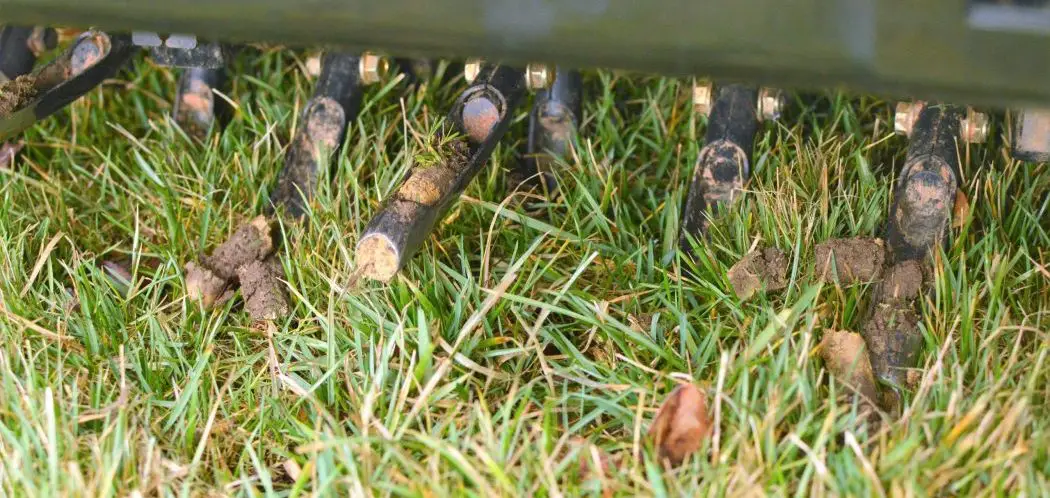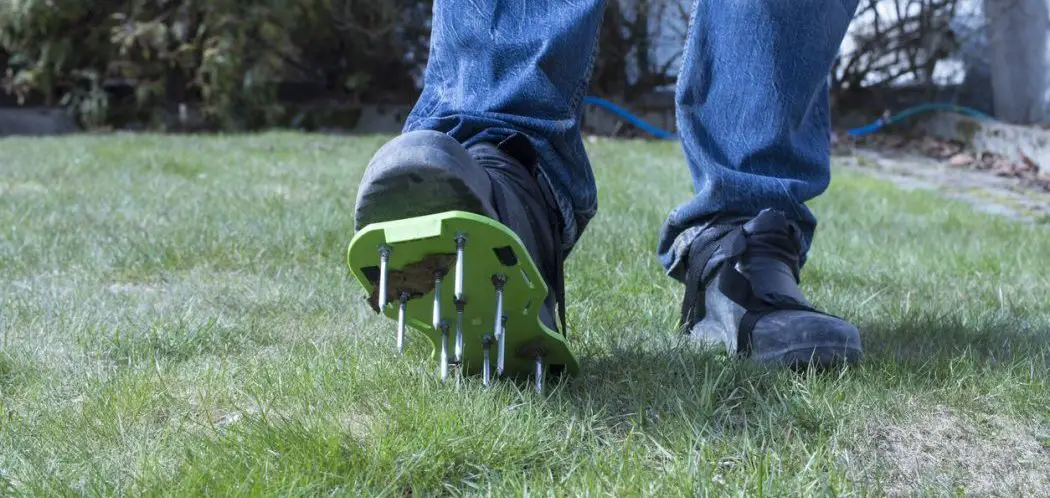When your soil gets very compact, the water runs off the top of the surface and the root system of the grass doesn’t get much water. The second problem with compaction is that there is a lack of airflow to the root zone which limits the amount of oxygen down there too.
You may notice some brown spots where the dirt has gotten so tight and the roots can’t spread out and grow.
Aerators are used to reduce soil compaction and to allow air, water and nutrients to penetrate faster and deeper into the soil. It works well in conjunction with seeding to provide a good environment for the seeds to come up.

There are several different tools that you can used to aerate your lawn, some are mechanical, some are manual and there are chemical options too.
In this article, I’ll cover the various different types of aerators you can use and explain when you might want to use them.
There two traditional types of aerators, spike and core aerators. To put it simply, spike and core aerators put holes in the ground.
Spike aerators
Like it sounds, most spike aerators work by rolling spikes across your lawn. The idea is that these spikes penetrate the ground leaving small holes that allow air, water and nutrients to get down into the ground. Most commonly, spikes are added to the outside of a drum which is then towed around the yard by a lawn tractor. To increase spike penetration, you can add weight. This is often done by filling the drum with water.
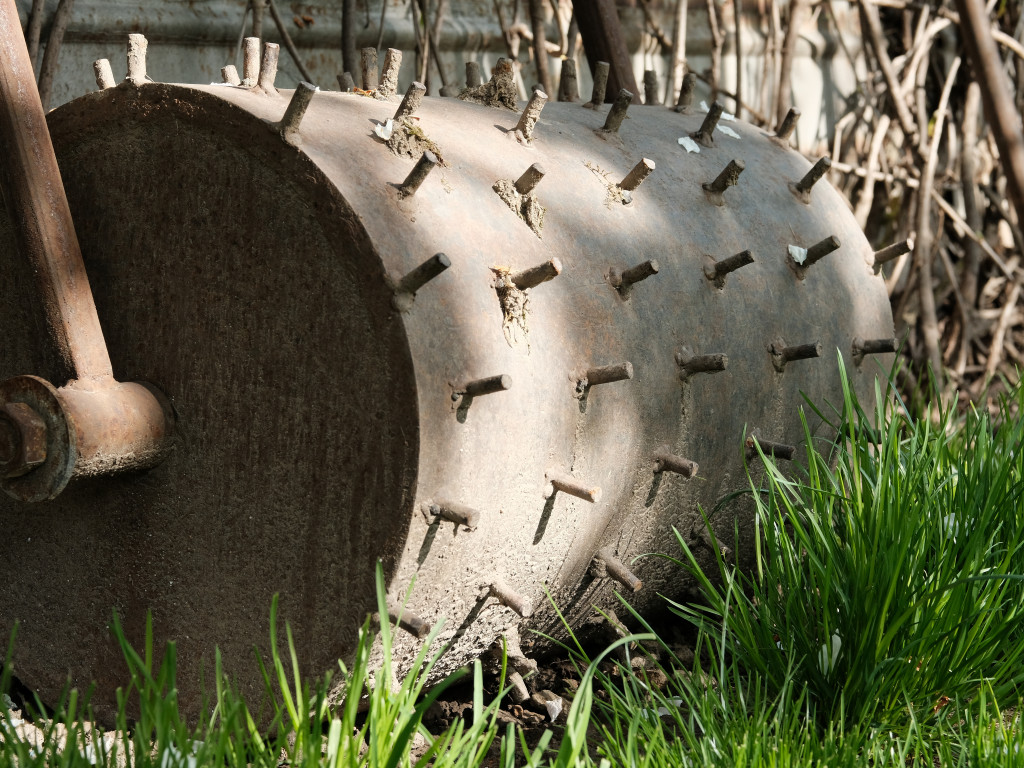
Aerator shoes
Some people like to use aerator shoes which have spikes on the bottom. You then walk across your lawn so that the spikes stick into the ground. Sometimes golf shoes are recommended for this too.
I wouldn’t recommend this method of aerating. It’s not effective in reducing soil compaction because you’re not going deep enough into the ground. Studies have shown you’re covering too small of an area for it to make any difference.

Core aerators
A core aerator has tines that go into the ground. Each pulls up a plug of soil. Once this plug has been removed, the soil is now open to allow for more airflow, water and nutrient absorption.

Reciprocating vs drum type
There a couple of different styles of core aerator machines. One being a reciprocating aerator and the other is a drum type aerator.
A reciprocating aerator runs on a cam shaft which turns on a pulley system. The hollow tines are propelled and go straight up and down into the ground. During this process, you pull out lots of tiny plugs of dirt called cores.
With a drum type aerator, the tines are on a shaft which rotates. As the machine moves forward, the weight of the machine drives the tines into the ground.
A reciprocating aerator has far less tines than a drum type, which is useful because it requires less service which saves your time and money. You can also adjust the hole density per square foot by slowing down the machine. This is great because you might have a dead or diseased area which you might want to repair by planting new seed.
You can get walk-behind or ride-on options. Riding on an aerator may be faster and less effort, but it will put less holes in the ground than a reciprocating aerator, so you’ll probably have to make multiple passes for it to be as effective.
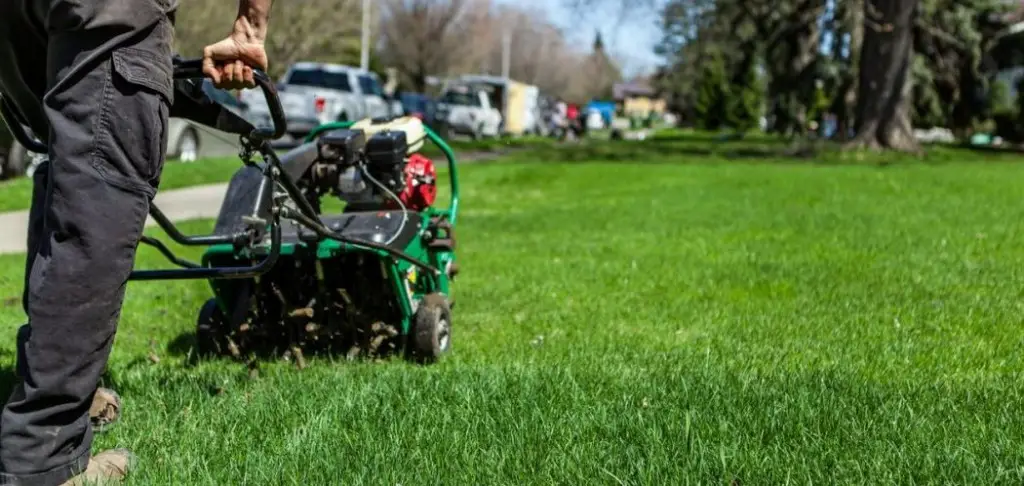
The moisture in the ground will determine how well these machines are going to work. The more moisture you have, the larger the plugs will be so ultimately more air and water can get deeper into the ground. If you haven’t had much rain and the ground is very dry, you might want to consider watering your lawn a little first. If you’ve got bare dirt then it’s good to go over these areas several times.
Some reciprocating aerators have a manoeuvrability advantage. You also get a reverse option on some models too which is useful to maneuverer around tricky spots of your yard. Drum style aerators will not reverse.
One downside of core aeration is that you’ll end up with lots of tiny plugs of soil on top your grass. Some people recommend leaving them on your lawn but I like to pick them up with a lawn sweeper. I’d rather let my grass breathe. Leaving plugs all over your grass looks terrible too.
Whichever style of aerator you like, make sure your lawn would actually benefit from aeration. If the soil is not compacted, there’s not real benefit and you can actually make a compaction problem worse. I’d recommend renting an aerator first too. This way you can see what works well for you before deciding to purchase anything.
Hand aerators
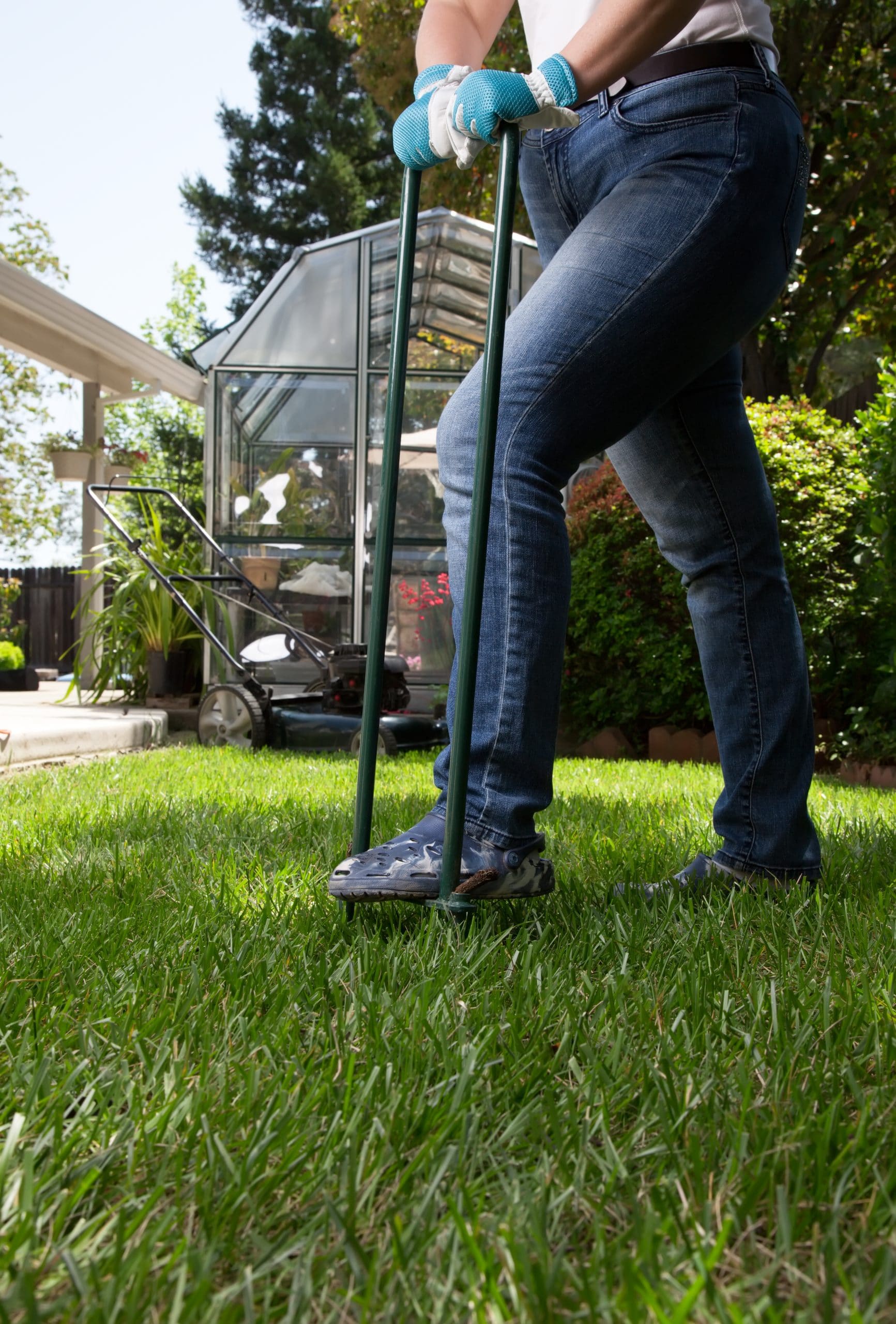 These are long tools that you stand on with one foot to poke down into the ground. When you pull them up, they pull out 2 or 3 inch plugs of soil.
These are long tools that you stand on with one foot to poke down into the ground. When you pull them up, they pull out 2 or 3 inch plugs of soil.
These work great for hot spots in your lawn and for places where a machine may not be able to get to. If you have construction debris under your lawn or spots of grass that seem to consistently dry out, you can either pull plugs up and leave them open or fill them in with organic that holds more moisture.
Hand aerators are great if you just want to take a plug for a soil sample too.
Liquid aerators
While traditional aerators involve poking holes in your lawn, you also have the option of using liquid aerators or soil looseners. These can also be helpful to get water get down into the soil by breaking up compaction.
Traditional aerators are a lot of work and they can be a pain to get a hold of sometimes. Some of them weigh over 200lbs so if you’re renting a large one, you’ll definitely need a trailer to transport it around. They aren’t cheap either, so a liquid aerator might be worth your consideration.
Liquid aerators can be applied easily to your entire lawn with a hose end sprayer and without much hassle.
I wouldn’t recommend going overboard when applying a liquid aerator. Two or three times a year should be enough to see some good results.
What type of aerator is recommended?
If you’re going with a traditional aerator, I’d always recommend aerating your lawn with a core aerator.
I’ve found core aerators to be much more effective then spike aerators and its kind of obvious when you think about it. You’re removing plugs of soil that are a few inches long allow for much more air flow. Although some spike aerators can work, they can actually need to more compaction in the long run.
If you want to stay away from dealing with extra machinery, I would recommend liquid aerators. I found liquid aerators to be much more effective than I anticipated. They are fairly cheap too so I would recommend giving it a try.

